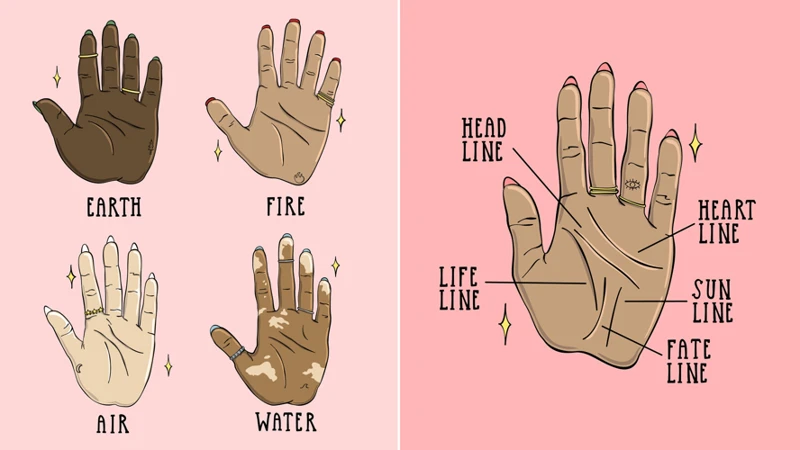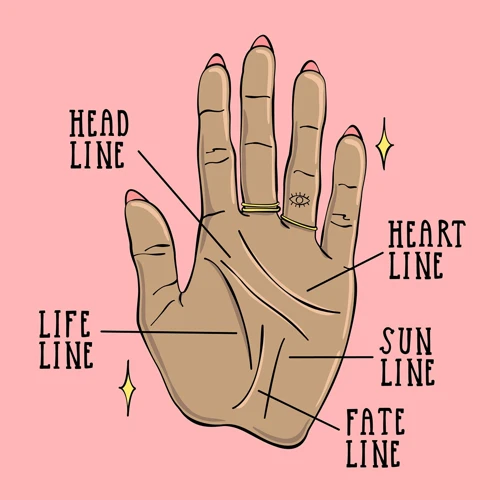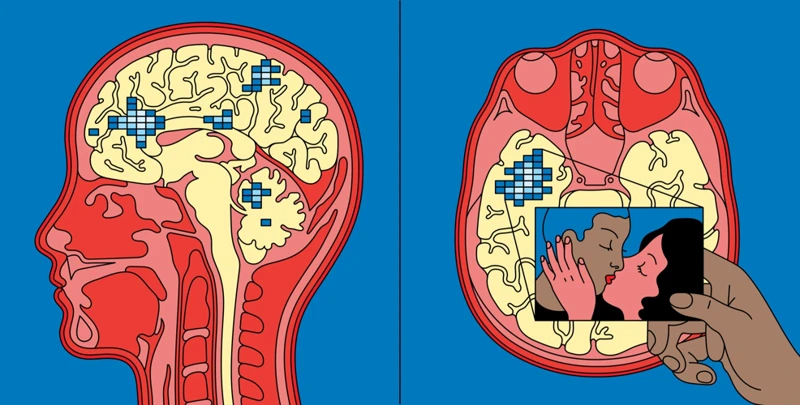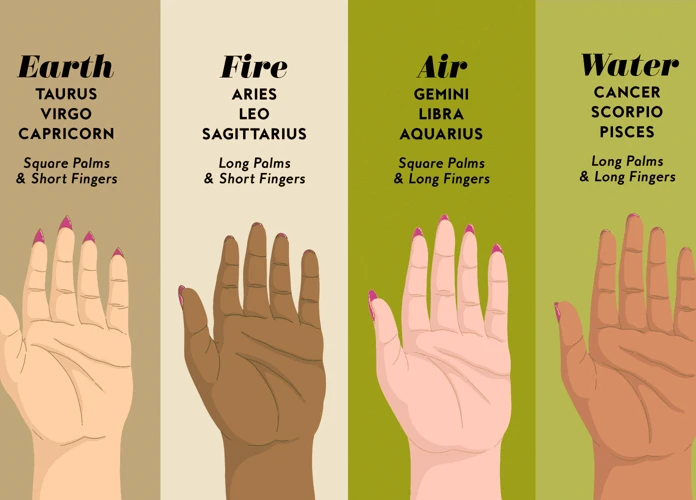Palm reading, also known as palmistry, has been a subject of fascination for centuries. The idea that the lines and features on our hands can reveal information about our personality, health, and future has captivated people from all walks of life. But what is the science behind this ancient art? In this article, we will delve into the myths and facts surrounding palm reading, exploring the various aspects that contribute to the practice, including genetic factors, developmental biology, dermatoglyphics, psychology, cognitive bias, communication and body language. We will also examine the skeptic’s viewpoint, scientific studies and research, as well as the role of intuition and empathy in palm reading. So, let’s dive into the intriguing world of palm reading and uncover the truth behind its enigmatic allure.
Contents
- A Brief History of Palm Reading
- The Basics of Palm Reading
- The Science Behind Palm Reading
- The Skeptic’s Viewpoint
- Scientific Studies and Research
- The Role of Intuition and Empathy
- Benefits and Limitations of Palm Reading
- Conclusion
-
Frequently Asked Questions
- 1. What is the main purpose of palm reading?
- 2. Is palmistry considered a science or a pseudoscience?
- 3. Can palm reading accurately predict the future?
- 4. Can palmistry determine a person’s longevity?
- 5. Are the interpretations in palm reading standardized?
- 6. Can palm reading be used to assess compatibility in relationships?
- 7. Is there a connection between hand dominance and palmistry?
- 8. Can palm reading help in making career choices?
- 9. Can palmistry reveal information about a person’s health?
- 10. Can palmistry be learned and practiced by anyone?
- References
A Brief History of Palm Reading

Palm reading, or palmistry, can trace its roots back thousands of years to ancient civilizations such as Mesopotamia, China, and India. The practice has evolved over time and has been influenced by various cultural and religious beliefs. In ancient Greece, for example, palmistry was associated with the Greek god Hermes. The Romans also embraced palmistry and believed that the lines on the palms could reveal information about one’s character and future. In India, palmistry was practiced alongside astrology and was considered a vital tool for understanding a person’s life path and potential. The art of palm reading spread to Europe during the Middle Ages, where it gained popularity among nobility and commoners alike. Over the centuries, different palmistry traditions emerged, each with its own set of techniques and interpretations. Today, palmistry is still practiced and studied worldwide, with modern palmists incorporating both traditional and contemporary approaches. The fascinating history and rich cultural heritage of palm reading have contributed to its enduring appeal and intrigue. To learn more about the origins and development of palmistry, you can explore the history and origins of palmistry.
The Basics of Palm Reading

The basics of palm reading involve carefully examining the various lines, mounts, and other features present on the palm of the hand. Each of these elements is believed to correspond to different aspects of a person’s life and personality. The major lines analyzed in palm reading include the heart line, which signifies emotions and relationships, the head line, which represents intellect and communication abilities, and the life line, which is associated with vitality and overall well-being. Additionally, there are smaller lines such as the fate line, which is thought to indicate the path of destiny, and the marriage line, which is linked to love and relationships. The mounts, or fleshy areas on the palm, also play a role in palmistry. They are associated with specific qualities or characteristics, such as the mount of Venus, which is linked to love, and the mount of Jupiter, which is connected to ambition and success. By analyzing the patterns, shapes, and intersections of these lines and mounts, a palm reader can interpret the unique traits and potential future events that may be indicated in an individual’s hand. Keep in mind that palm reading should not be viewed as an exact science, but rather as a tool for self-reflection and gaining insight into personal strengths and weaknesses. If you’re interested in exploring the relationship aspect of palm reading further, you can learn more about how palmistry can provide insights into love and relationships by visiting our article on palmistry and love relationships.
The Science Behind Palm Reading

Palm reading may seem mystical, but there are scientific factors at play that contribute to its interpretations. Understanding the science behind palm reading involves exploring genetic factors, developmental biology, dermatoglyphics, psychology and personality traits, cognitive bias, and communication through body language. Firstly, genetic factors can influence the formation of hand features, such as the shape and size of the palm and fingers. Secondly, developmental biology plays a role in how the lines on the palm form, influenced by factors like blood flow and tissue development. Dermatoglyphics, the study of skin ridge patterns, reveals unique configurations on the palms that remain constant throughout a person’s life. These patterns, including whorls, loops, and arches, contribute to palm readings. Psychology and personality traits can be inferred through hand gestures, such as a firm handshake indicating confidence or a restless hand indicating nervousness. Cognitive bias also comes into play, where palm readers may interpret vague or general statements as specifically tailored to the individual. Lastly, communication and body language give additional clues, with gestures and movements providing insights into a person’s thoughts and emotions. By understanding these scientific aspects, we can gain a glimpse into the fascinating science behind palm reading. To further explore the topic of hand dominance and its significance in palmistry, you can refer to hand dominance in palmistry.
1. Genetic Factors
Genetic factors play a significant role in shaping the unique characteristics of our hands, including the patterns of lines, shapes, and formations found in palm reading. Our genetic makeup determines the basic structure and formation of our hands, which in turn affects the patterns of dermatoglyphics. Dermatoglyphics refer to the ridges and patterns on the skin’s surface, including fingerprints, palm prints, and toe prints. These unique patterns are formed during fetal development and remain relatively stable throughout a person’s life.
Research has shown that there is a hereditary component to dermatoglyphics, indicating that certain patterns can be passed down from parents to their offspring. For example, the presence of certain fingerprint patterns like loops, whorls, or arches may run in families. Additionally, the length and width of fingers can also be influenced by genetic factors.
In palm reading, genetic factors are considered when analyzing the size and shape of the hand, the length of the fingers, and the positioning of the lines. For instance, a large hand with long fingers may be associated with inherited traits such as intelligence or creativity. On the other hand, a small hand with short fingers may indicate a more practical and detail-oriented individual.
It is important to note that while genetic factors contribute to the overall hand structure, palm reading goes beyond genetics and takes into account other aspects like environmental influences and personal experiences. So, while genetic factors provide a foundation, there are many other factors involved in interpreting the intricacies of palmistry.
2. Developmental Biology
Developmental biology plays a significant role in understanding the science behind palm reading. The formation of the lines, shapes, and patterns on our palms begins during the early stages of embryonic development. As our hands develop in the womb, genetic and environmental factors influence the growth and differentiation of tissues, ultimately shaping the unique features of our hands. The positioning and prominence of the major lines, such as the heart line, head line, and life line, are determined by the complex interplay of genes, hormones, and mechanical forces during this developmental process. The length, depth, and curvature of these lines can provide insights into a person’s temperament, emotional tendencies, and even potential health predispositions. Scientific studies have explored the correlation between certain genetic traits or prenatal conditions and the presence or absence of specific palm features. For example, researchers have found associations between certain genetic markers and variations in dermatoglyphics (the study of fingerprints and palm prints) that may have implications for certain medical conditions or syndromes. While developmental biology is a key factor in shaping our palms, it is important to note that palm reading is not a diagnostic tool and should be interpreted with caution. The information obtained through palm reading should be regarded as a holistic and complementary aspect of understanding an individual’s uniqueness.
3. Dermatoglyphics
Dermatoglyphics is a field of study within palm reading that focuses on analyzing the patterns and ridges found on the skin of the hands and fingers. These patterns include fingerprints, palm lines, and other unique markings. Dermatoglyphics has its roots in embryology, as the patterns on the skin are formed during fetal development and remain relatively stable throughout a person’s life.
The study of dermatoglyphics has shown that certain patterns are more common in specific populations, indicating a genetic component. For example, loops, whorls, and arches are the three basic types of fingerprint patterns, and their prevalence can vary depending on ancestry. Additionally, dermatoglyphics can reveal information about certain genetic disorders and conditions, such as Down syndrome and Marfan syndrome, as certain skin patterns are associated with these conditions.
In palmistry, dermatoglyphics is used to interpret the meaning behind the various lines and marks on the palms. Each line, such as the life line, heart line, and fate line, is believed to represent different aspects of a person’s life. The shape, length, and depth of these lines are analyzed to provide insights into personality traits, potential health issues, and even future events.
It’s important to note that dermatoglyphics is a complex field of study, and its interpretations can vary among practitioners. The patterns and lines on the skin are not absolute indicators of specific characteristics or events but rather serve as potential indications that can be further investigated in conjunction with other palmistry techniques.
Dermatoglyphics plays a significant role in palm reading by providing valuable information about genetic factors and potential traits. By examining the intricate patterns on our hands, palmists can gain insights into our individuality and aspects of our lives.
4. Psychology and Personality Traits
Psychology plays a significant role in the interpretations made during palm reading. The lines, shapes, and patterns on the hands are believed to provide insight into an individual’s personality traits and psychological tendencies. For example:
1. Hand Shape: The shape of the hand is thought to indicate certain personality traits. People with square-shaped hands are often associated with practicality, reliability, and a methodical approach. Those with long and narrow hands are said to possess artistic inclinations, sensitivity, and an intuitive nature.
2. Finger Length: The length of the fingers is believed to be linked to specific character traits. Individuals with long fingers are often associated with being idealistic, analytical, and detail-oriented. Short-fingered individuals are thought to be practical, efficient, and prefer a hands-on approach.
3. Thumb: The size and flexibility of the thumb can provide insight into an individual’s willpower and assertiveness. A strong and flexible thumb is often seen as an indicator of leadership qualities and a determined nature.
4. Mounts: The bumps or raised areas on the palm, known as mounts, are associated with different planetary influences. The size and prominence of these mounts are believed to reflect personality traits. For instance, a well-developed Mount of Venus is often connected to a love for beauty, while a dominant Mount of Jupiter may signify leadership skills and ambition.
5. Lines: The various lines on the palm, such as the life line, head line, and heart line, are vital aspects of palm reading. These lines are interpreted to provide information about one’s emotional tendencies, intellectual capabilities, and overall vitality. However, it is important to note that the interpretation of these lines can vary among different palmistry traditions.
By examining these psychological aspects, palm readers aim to gain insight into an individual’s preferences, strengths, weaknesses, and how they may approach different aspects of life. It is worth noting that while palmistry offers insights into personality traits, it does not determine a person’s future or provide definitive answers. The interpretations made through psychology in palm reading are subjective and should be approached with an open mind and a healthy dose of skepticism.
5. Cognitive Bias
Cognitive bias plays a significant role in palm reading, influencing both the practitioner and the person whose palm is being read. The human mind is susceptible to various cognitive biases that can unconsciously affect the interpretation of palm lines and features. One common cognitive bias in palm reading is confirmation bias, where the palmist tends to focus on information that confirms their preconceived notions or beliefs. This bias can lead to cherry-picking certain lines or features and ignoring others that don’t align with their expectations. Another cognitive bias is the Barnum effect, also known as the Forer effect, which refers to the tendency to accept general, vague statements as highly accurate and specific to oneself. Palmists sometimes make generalized statements about personality traits and life events, which individuals often interpret as highly personalized insights. Additionally, the availability heuristic, which involves relying on immediate examples that come to mind, may impact the interpretation of palm lines and features. Palmists may unintentionally give more weight to certain characteristics based on their recent experiences or exposure to specific palm reading cases. It is important for both palmists and those seeking readings to be aware of these cognitive biases and approach palmistry with a critical mindset. By acknowledging these biases, individuals can better evaluate and interpret the information provided during a palm reading session.
6. Communication and Body Language
Communication and body language play a significant role in palm reading. When a palmist examines someone’s hand, they not only observe the lines and features but also pay attention to the person’s non-verbal cues and gestures. Facial expressions, hand movements, and body posture can provide valuable insights into a person’s emotions, thoughts, and overall character. For example, a firm handshake may indicate confidence, while a limp handshake could suggest timidity. The warmth or coolness of a person’s hands may reveal their emotional state. Additionally, the way individuals hold their hands or make gestures can indicate certain personality traits. Someone who talks with expressive hand movements may be more outgoing and extroverted, while someone who keeps their hands close and avoids gestures may be more reserved. These non-verbal signals help the palmist develop a better understanding of the person they are reading, complementing the analysis of palm lines and features. By considering communication and body language alongside other elements, palmists can provide a more nuanced interpretation of the individual’s character and potential. It is important to note that while communication and body language enhance the palm reading experience, they should not be solely relied upon, as they are subjective and can vary between individuals.
The Skeptic’s Viewpoint

The skeptic’s viewpoint provides a critical perspective on palm reading, questioning its legitimacy as a scientific practice. Skeptics argue that palm reading relies on techniques such as cold reading, which involves making general statements that could apply to anyone, and then allowing the individual to interpret those statements in a personal way. This technique can create the illusion of accuracy, even though the statements themselves are vague and open to interpretation. Another factor that skeptics highlight is the Forer effect, which refers to the tendency for individuals to believe that general and vague descriptions about themselves are specifically tailored to them. This effect can lead people to validate the claims made in palm readings, despite the lack of concrete evidence. Skeptics point out that interpretations in palm reading are subjective, varying from one palmist to another. This subjectivity raises questions about the consistency and reliability of the practice. While skeptics acknowledge that some palm readings may provide insights into a person’s psychological state or personality traits, they caution against attributing these observations to supernatural or mystical powers. The skeptic’s viewpoint provides a critical analysis of palm reading, urging individuals to approach it with caution and skepticism.
1. Cold Reading
Cold reading is a technique often associated with palm reading and other forms of divination. It refers to the act of making general statements or predictions that appear specific and accurate but are actually based on subtle cues and the understanding of human psychology. This method is used by some practitioners to give the illusion of having special insights into a person’s life based solely on the information gathered during the reading session. There are several techniques involved in cold reading:
1. Barnum Statements: These are generalized statements that could apply to anyone. They are designed to elicit agreement and confirmation from individuals seeking a palm reading. For example, a palm reader might say, “You have experienced both moments of great success and periods of challenge,” which is vague enough to apply to most people.
2. Fishing: This technique involves asking open-ended questions and paying close attention to the client’s responses. By picking up on verbal and non-verbal cues, the palm reader can modify their statements to align with the information provided by the client.
3. Cold Reading Tools: Palm readers may use various tools such as tarot cards, astrology, or numerology to enhance their cold reading techniques. These tools provide a framework for generating statements that appear accurate and reliable.
4. Body Language Reading: Observing a person’s body language during a palm reading can provide valuable information. Subtle cues like facial expressions, hand gestures, or changes in posture can help the palm reader make deductions about the person’s character or emotional state.
It is important to note that not all palm readers employ cold reading techniques. Many legitimate practitioners genuinely believe in the power of palmistry and approach their readings with honesty and integrity. However, being aware of cold reading techniques can help individuals critically evaluate the information provided during a palm reading session and make more informed judgments about its accuracy and validity.
2. The Forer Effect
The Forer Effect, also known as the Barnum Effect, plays a significant role in palm reading and other forms of personality assessment. Discovered by psychologist Bertram R. Forer in 1948, this psychological phenomenon refers to the tendency of individuals to accept vague and generalized statements as accurate descriptions of themselves. In the context of palm reading, a palmist might provide clients with broad statements about their personality traits or future, using carefully crafted language that seems personalized but is, in fact, applicable to a wide range of individuals. Due to the innate human desire for validation and affirmation, people often identify with and believe these statements, even when they could apply to almost anyone. The Forer Effect highlights the power of suggestion and the role of subjective interpretation in palm reading. It reminds us to approach palmistry and other similar practices with a critical mindset, considering the possibility of generalization and inherent biases. Recognizing the Forer Effect allows us to question the validity and objectivity of the interpretations offered during a palm reading session.
3. Interpretation and Subjectivity
Interpretation and subjectivity play a significant role in palm reading. While there are established guidelines and meanings associated with the various lines, shapes, and markings on the palm, the interpretation of these features can vary between palmists. Each palmist brings their own perspective, experience, and beliefs to the practice, which can influence how they interpret the information presented on someone’s hand. There is no universally accepted interpretation for every detail found on the palm, making it a subjective process. Additionally, palm reading is not an exact science, and different palmists may focus on different features or prioritize specific factors based on their own theories or methodologies. This subjectivity can lead to different readings and varying interpretations, which can sometimes create confusion or disagreement among palmists. It is essential to keep in mind that interpretation in palm reading is not black and white but rather relies on the individual palmist’s expertise and perspective.
Scientific Studies and Research

Scientific studies and research have played a crucial role in evaluating the validity and accuracy of palm reading. While palmistry is often regarded as a pseudoscience, some researchers have conducted studies to explore the potential connections between hand features and certain traits or conditions. One area of study is dermatoglyphics, which focuses on analyzing the patterns and ridges on the fingertips and palms. Researchers have investigated the relationship between these dermatoglyphic patterns and genetic disorders, such as Down syndrome and schizophrenia. However, it is important to note that these studies have limitations, and the results have not been consistent enough to establish palmistry as a reliable diagnostic tool. Additionally, psychology researchers have examined the psychological aspects of palm reading, exploring how people perceive and interpret hand features and the impact of cognitive biases in palmistry readings. These studies suggest that palmistry relies heavily on subjective interpretation and individual beliefs, rather than objective scientific evidence. While scientific research can provide insights into certain aspects of palmistry, it has not fully substantiated palm reading as a definitive science.
The Role of Intuition and Empathy

When it comes to palm reading, the role of intuition and empathy cannot be overlooked. Palmists often rely on their intuitive abilities to interpret the lines, shapes, and markings on a person’s hand. Intuition allows them to tap into deeper levels of awareness, picking up on subtle energy and vibrations that may reveal insights about an individual’s life. Empathy also plays a crucial role as palm readers need to empathize with their clients to create a comfortable and trusting environment. By connecting with the emotional state of the person, palmists can better understand their needs, concerns, and aspirations, which can further enhance the accuracy of their readings. Intuition and empathy are subjective aspects of palm reading that go beyond the scientific and tangible elements. While they may not be measurable or explainable by conventional means, they contribute to the overall experience and effectiveness of palmistry. It is important to note that intuition and empathy should be coupled with a thorough understanding of palmistry principles and techniques to maintain an ethical and responsible practice.
Benefits and Limitations of Palm Reading
Palm reading, like any other practice, has its own set of benefits and limitations. Let’s take a closer look at both:
Benefits of Palm Reading:
1. Self-Awareness: Palm reading can offer individuals a deeper understanding of their own personality traits, strengths, and weaknesses. It can provide insights into one’s emotions, instincts, and life purpose.
2. Personal Growth: By recognizing patterns and potential obstacles in the palm, individuals can make informed choices and take proactive steps towards personal growth and development.
3. Relationship Insights: Palmistry can offer insights into relationships, helping individuals understand compatibility, communication styles, and potential challenges within personal and professional connections.
4. Decision-Making: Palm reading can aid in decision-making processes by providing individuals with a different perspective and shedding light on potential outcomes.
Limitations of Palm Reading:
1. Subjectivity and Interpretation: Palmistry relies heavily on individual interpretation, and different palmists may provide varying readings based on their understanding and expertise. This subjectivity can sometimes lead to conflicting information.
2. Lack of Scientific Evidence: While palm reading has been practiced for centuries, it lacks solid scientific evidence to support its claims. Critics argue that palmistry falls under the realm of pseudoscience.
3. Limited Predictive Accuracy: While palm reading can provide insights into an individual’s character traits and potential life paths, it is important to remember that it is not a crystal ball. Predictions should be taken with caution, as they are not set in stone.
4. Ethical Considerations: It is important to approach palm reading with ethical considerations in mind. Palmists should focus on providing guidance, support, and empowerment rather than instilling fear or exploiting vulnerable individuals.
It is important to approach palm reading with an open mind and recognize its limitations. While it can offer valuable insights and self-reflection, it should always be accompanied by critical thinking and personal discernment.
Conclusion
In conclusion, the science behind palm reading is a combination of various factors such as genetic factors, developmental biology, dermatoglyphics, psychology, cognitive bias, and communication. While palm reading is not based on concrete scientific evidence, it holds value as a form of self-reflection and self-discovery for many individuals. The skeptics’ viewpoint highlights the use of cold reading techniques and the Forer effect, which can lead to subjective interpretations. However, scientific studies have also delved into the role of intuition and empathy in palm reading, suggesting that practitioners may possess an innate ability to read subtle cues and non-verbal communication from the hands. It is important to approach palm reading with an open mind, recognizing its limitations and understanding the potential for personal interpretation. Ultimately, palm reading can provide insights into oneself and serve as a tool for personal growth and introspection. Whether you embrace it as a mystical art or approach it with skepticism, palm reading continues to intrigue and fascinate individuals across cultures and generations.
Frequently Asked Questions
1. What is the main purpose of palm reading?
The main purpose of palm reading is to gain insight into a person’s character, potential, and future. It is believed that the lines, shapes, and markings on the palm can provide clues about a person’s personality traits, talents, health, and possible life events.
2. Is palmistry considered a science or a pseudoscience?
Palmistry is generally considered a pseudoscience, as it does not adhere to the scientific method and lacks empirical evidence to support its claims. However, it is still studied and practiced by individuals who believe in its potential to reveal significant information about an individual.
3. Can palm reading accurately predict the future?
Palm reading cannot accurately predict specific future events. The lines on the palm are believed to indicate potential paths and patterns, but it is up to the individual to make choices and decisions that shape their future.
4. Can palmistry determine a person’s longevity?
Palmistry is not capable of accurately determining the exact lifespan of an individual. However, some palmists believe that certain markings or characteristics on the palm can provide clues about a person’s overall health and vitality.
5. Are the interpretations in palm reading standardized?
No, interpretations in palm reading can vary among different practitioners and traditions. While there are some common interpretations, the overall analysis of the palm depends on the individual palmist’s knowledge, experience, and personal beliefs.
6. Can palm reading be used to assess compatibility in relationships?
Some palmists believe that certain features on the palm can provide insights into a person’s love and relationship dynamics. However, the success and compatibility of a relationship depend on various factors beyond palmistry, such as communication, shared values, and mutual understanding.
7. Is there a connection between hand dominance and palmistry?
Hand dominance, or the preference for using the right or left hand, is not directly connected to palmistry. However, some palmists may consider hand dominance as a factor when analyzing the palm, as it can influence the prominence and development of certain lines and features.
8. Can palm reading help in making career choices?
Palm reading can offer insights into an individual’s strengths, talents, and potential career paths. It can provide guidance and help individuals explore their natural abilities but should not be the sole basis for making career decisions.
9. Can palmistry reveal information about a person’s health?
Some palmists believe that certain markings, shapes, or patterns on the palm can offer clues about a person’s health tendencies or the potential for certain conditions. However, it is important to note that palmistry should not replace medical advice or diagnosis.
10. Can palmistry be learned and practiced by anyone?
Yes, palmistry can be learned and practiced by anyone who is interested in studying and exploring its principles. It requires dedication, observation skills, and a good understanding of the various aspects of palm reading to develop proficiency in the art.







